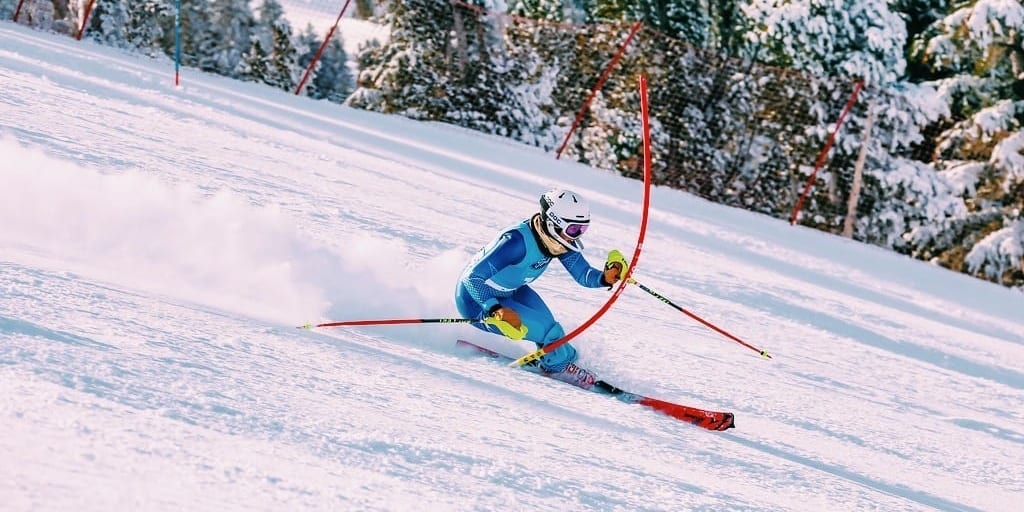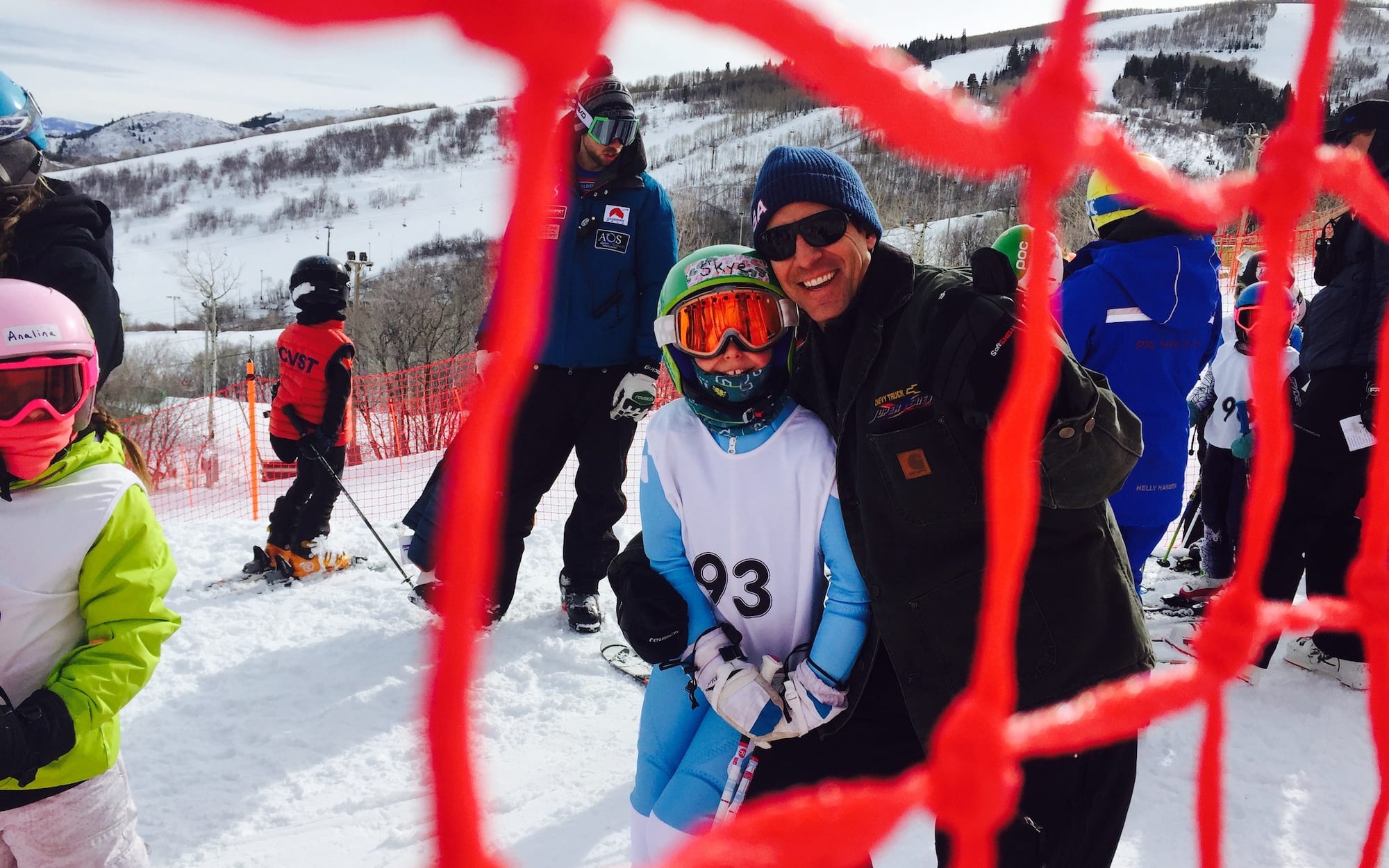Back to the Future with Another GS Radius Change
Earlier this month at the biennial FIS Congress in Cancun, Mexico, the alpine committee and executive board approved new equipment regulations for men’s FIS giant slalom skis that sound vaguely familiar for racers and manufacturers who went through the last major adjustments in 2012.
Beginning in the 2017-18 season, all male competitors will have to adhere to a minimum ski length of 193 centimeters with a -5 centimeter tolerance for FIS-level races only. More importantly, the minimum ski radius was shortened to 30 meters from the current 35 meters, a measurement which has been in place for World Cup skiers since the start of the 2012-13 season.
This move puts the men’s radius in-line with the current women’s GS profile which is also 30 meters and will not change. According to industry insiders, the 35-meter skis were becoming increasingly burdensome for racers of all levels, particularly younger athletes. Even World Cup males are beginning to show serious wear and tear on their bodies due to the intense physical nature of maneuvering the skis.
“My first reaction was I wish they had done it sooner,” says Nordica USA’s Ethan Korpi. “It’s a great thing that they recognize that the sport would be more enjoyable and easier to attract new athletes and retain athletes. I also do appreciate them making the decision and moving the timeline up to Soelden 2017 versus after the Olympics in 2018.”
For the 2012 Soelden kick off, World Cup men had to adjust from regulations that required 27-meter radius GS skis at a minimum length of 183 centimeters to the 35-meter radius skis at 195 centimeters. At the time, Ted Ligety was typically competing on a GS ski at 191 centimeters in length with roughly a 31-meter radius. One of the more vocal athletes who opposed the change that time around, Ligety successfully altered his technique and tactics to secure the GS globe in the following two seasons. The 35-meter radius rule was phased in on the junior level of FIS racing for 2013-14, but the adjustment proved less swift for developing athletes.

Ted Ligety has enjoyed much success on the 35-meter radius skis. GEPA
Young male FIS athletes have struggled to develop on 35-meter radius skis due to the amount of strength required to safely and effectively control the equipment. It’s a challenge that was known to athletes, coaches, parents, and ski manufacturers alike since the current regulations were adopted several seasons ago. Mount Mansfield Ski Club Head Men’s FIS Coach Lorant Gudasz welcomes the change to revert back to the 30-meter radius and sees it as a positive step in terms of athlete development.
“Personally, I think it’s great that they made the move,” explains Gudasz. “From a development perspective, young kids were really not in a good spot with the 35-meter radius ski. It was just because they are physically not that strong so they couldn’t really be over the skis and be able to charge. Especially the first- and second-year FIS athletes were really struggling on those skis, so I’m pretty psyched to see that change.”
With that change comes pressure on equipment manufacturers to churn out enough product in time for the start of the 2017 season. According to Korpi, Nordica and the other ski brands learned a thing or two when they were rolling out the 35-meter skis back in 2012.
“The 30-meter ski is pretty darn close in terms of dimensions to what we were building before.”
– Ethan Korpi
“In terms of building skis for World Cup athletes, it’s not really too much of a struggle,” Korpi explains. “Just based upon the timeline, we look at it and see they’re pretty much all in Europe and our factory is in Europe so we can prototype out the skis we need to get on their feet. It does put a little bit of a crunch on the timeline for team-level FIS and below, really the junior FIS level and university athlete. We need to basically re-tool in enough time to get skis into the U.S. or into any other country for that matter for spring testing and early season camps. It kind of jams up our R&D department and our factory a little bit, but we actually gained a little bit of experience with this last switch from 27 to 35 on how to execute that. Hopefully it will be a little bit easier and a little bit more streamlined than it was the last go around.”
Korpi also adds that in fact, some brands were experimenting with 30-meter skis prior to the switch to 35 meters, which will further streamline the process.
“It’s 100 percent easier to build a 30-meter ski from scratch than it was building the 35 because we just hadn’t been building skis with those types of dimensions for a very long time, any time in the modern era, really,” continues Korpi. “The 30-meter ski is pretty darn close in terms of dimensions to what we were building before. The FIS rule was 27, but we were flirting with some 30 to almost up to 32 meters in some ski models anyway, so we have a really good starting point that we were recently working with.”

An incredible amount of strength is required to bend your skis like Marcel Hirscher. GEPA
All of this seemingly good news doesn’t come without concerns, however, as Bob Couture of the local Ford Sayre Academy in Hanover, New Hampshire, points out some problems inherent in the switch. There will be a birth year of FIS boys who will still have to make the huge jump from the U16 USSA ski up to the 35-meter FIS ski for only a single season, also requiring a financial commitment to equipment that some families might struggle to justify.
“We have three FIS boys who are going to be first-year FIS racers this year,” Couture says. “This coming year, they have to be on a 35-meter ski, so they are jumping from probably a 24-meter ski to a 35-meter ski. They are going to do this for one year and then they are going to fall back down and go to a 30-meter ski. Those things, from a financial perspective as a family, are tough to swallow.”
For Gudasz, the answer to this dilemma lies in taking a hard, honest look at each athlete’s skill level and physical maturity to decide how best to proceed.
“Honestly, that’s something that’s in the back of my mind right now,” adds Gudasz. “If I see an athlete that is a U16 moving up to U19 and is physically more mature, I think they could benefit and be OK with that transition. But financially, to make that investment is really tough. In terms of the big picture, you’re going to have super G skis that are a 45-meter radius anyways, so there’s nothing too wrong with it. But if you have a talented kid that is not really ready physically to be on those skis, to benefit him developmentally, I would strongly encourage him to think about skiing and training and maybe just racing USSA races to develop a USSA point profile instead of chasing a series that is going to be really tough to develop a FIS profile since it’s going to be so hard to ski on those skis from the back of the pack and really not being strong enough to be in charge on them.”
Selecting the proper development pathway for a rising U19 male should be up to the athlete, his parents, and his coaches.
“You have to have some joy and fun on your skis,” Gudasz concludes. “Most of those kids really didn’t enjoy themselves on those 35-meter radius skis.”





















